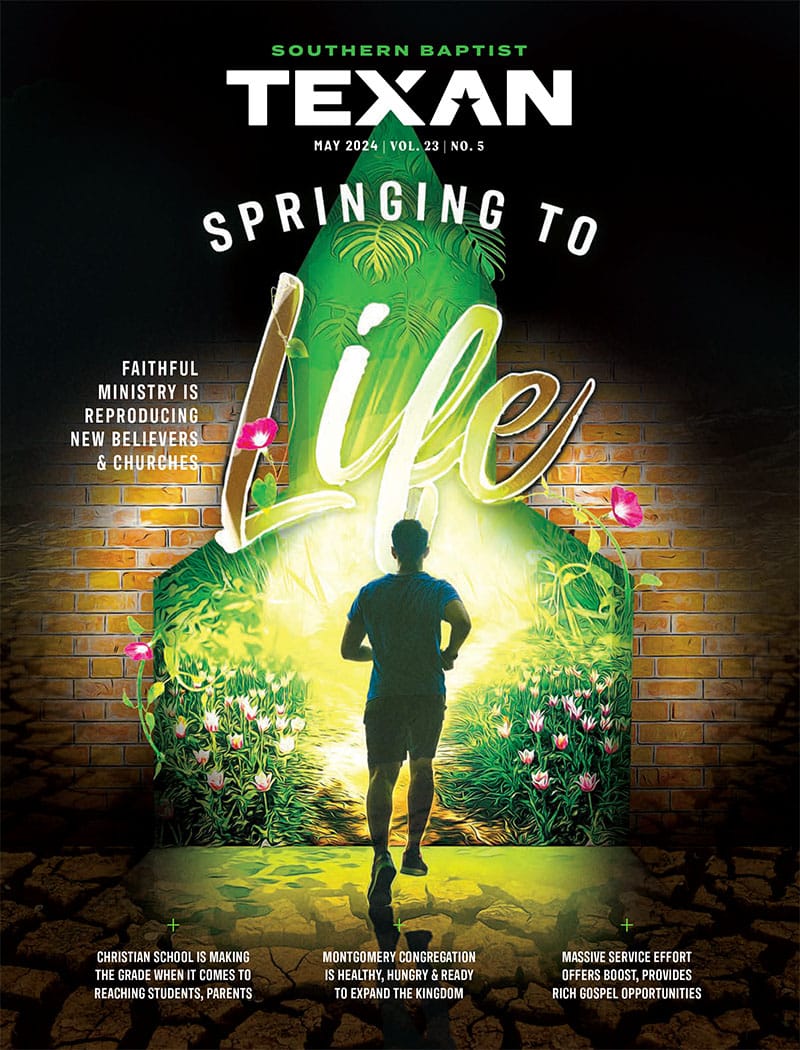FORT WORTH Anyone who has attended church for more than a few years knows the basic outline of a typical Sunday morning sermon: An introduction, a few points and a conclusion.
This is so common, in fact, that some churches hand out fill-in-the-blank sheets so that attendees can easily remember the outline, with the three to four points serving as the core.
Southwestern Baptist Theological Seminary preaching professor Steven W. Smith isn’t opposed to such a structure in a sermon, but he does believe it is far too common in today’s preaching—and often does not fit the text.
In Smith’s book Recapturing The Voice Of God: Shaping Sermons Like Scripture, he explains how a sermon’s structure should be radically different depending on the genre of the text. Sure, he says, a three-point sermon might work for some books of the Bible, but not all of them.
“In well-meaning expository preaching, we use the same outline on every type of genre in Scripture,” Smith told the TEXAN, explaining his concern. “What we’re inadvertently teaching people is that the Bible is flat and monochromatic. But you can have as many sermon structures as there are Scriptures. That’s not because we want to be creative; it’s just because we want to be faithful.”
Smith argues for text-driven or genre-sensitive preaching, where the genre of the text determines the sermon structure. There are at least nine genres of Scripture, according to the Smith, and all of them fit into three categories:
- Story (genres: Old Testament narrative, law, Gospels/Acts, parables).
- Poem (genres: Psalms, prophecy, wisdom literature).
- Letter (genres: epistles, Revelation).
The book devotes one chapter to each genre. Genres, Smith said, speak to “God’s creativity.”
“Sometimes we need someone to get up in our face, like Paul in Galatians 3, and other times we need to cry out to God and complain, like Psalm 13,” he said.
Smith developed his view of sermon structure over the past decade as he prepared sermons and saw that the traditional sermon outline was “not really stapled to the text.”
“The problem is that it can be forced,” he said.
For example, although the epistles lend themselves “to multiple points,” other genres may not.
“The main genre of Scripture is narrative, and there aren’t any points there,” he said. “If we want to represent Scripture well, we have to honor the genre. So working off our definition of text-driven preaching – which is interpreting and communicating a biblical text and a sermon that represents the substance, structure and spirit of the text—we have to figure out how we can have sermon templates that faithfully get at the text.”
In the book, Smith asserts that “there are aspects of the meaning” of the text that “will never be understood clearly without wrestling with the genre.”
“Therefore, to preach the Word of God in the voice of God we must first listen carefully to hear the voice ourselves,” he writes.
Smith asks in the book: “Is it the pastor’s responsibility to explain Scripture to his congregation?”
To do that, he says, the genre must be explained and must form the basis of the sermon.
“At some point in recent times evangelical preachers decided they are not preachers as much as communicators,” Smith wrote, arguing that such a concept is wrong. “We are indeed communicators, but we are more than communicators. We are standing before the people answering the question, What did God say?”
This does not mean, though, that the preacher is merely reading the text.
“Peaching is more than re-presenting a Scripture, but it’s not less than that, either,” Smith told the TEXAN.
Text-driven preaching, he added, makes sermon preparation easier—and more natural.
“I think it’s one of the most liberating things I’ve experienced,” he said. “It’s much more natural, because you’re deferring to the text. I never have to come up with another sermon outline.”
It also makes preaching exciting, he said.
“When I started preaching, the most fearful thing was I didn’t know how to structure a sermon,” Smith said. “Now, the most fearful thing is that I do know how to structure a sermon. … To me, the thrill of this is that for the rest of my life, I have the joy and the anticipation so that when I discover things in the Word of God, it’s fresh and it’s real, and it’s not flat and three points.”














